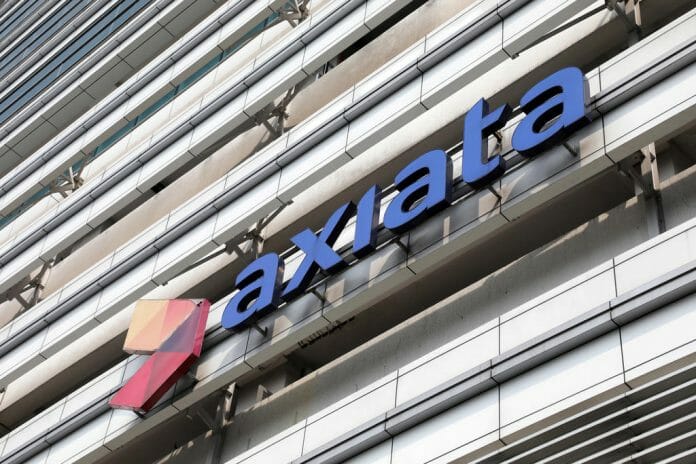Investment house Kenanga, notes that Edotco plans to exit Myanmar to enhance its appeal to potential new shareholders. Meanwhile, AXIATA has no immediate plans to expand the geographical footprint of its digital telcos post the exit from Nepal, while Link Net is likely to fund its expansion plans with equity from new investors.
In order for Edotco to enhance its appeal to potential new shareholders, AXIATA plans to carve out its operations in Myanmar. Whilst operations at Myanmar remain highly profitable (EBITDA margin: 85%), the decision to exit is attributed to ESG concerns. To recap, following a coup in 2021 that overthrew Myanmar’s democratically elected government, the country is now ruled by a military regime. A more efficient route for Edotco’s withdrawal would be disposal of its towers in Myanmar
to local buyers. Hence, this would hasten the process of securing regulatory approvals and accelerate Edocto’s departure (target: 2024). Meanwhile, Edotco’s operations at Myanmar remain intact although it has stop investing in the country. To recap, out of its total portfolio of 58k towers, Edotco owns circa 2,000 towers and manages 1,000 sites at Myanmar.
Outside of Myanmar, Edotco remains on expansion mode, with plans to grow in Malaysia, Philippines and Bangladesh. In particular, Edotco may potentially gear up to fund its expansion in Philippines. To recap, it recently ventured into Philippines in Sept 2023 via the acquisition of 2,710 tower sites. Consolidating digital telcos. Post disposal of NCell Nepal, AXIATA’s portfolio of digital telcos is currently in consolidation mode. This implies that the group has no immediate plan to venture into new markets to expand its telco footprint. Instead, it will focus on value creation via market repair (ie. uplift in ARPU), delivery of merger synergies at CelcomDigi, and transformation at XL and Link Net. Correspondingly, AXIATA expects XL and Robi to drive near term earnings growth for the telco segment on the back of market repair. Nevertheless, dividends to HoldCo are expected to remain steady and sustainable at circa RM150m p.a. from each digital telco.
Meanwhile Kenanga is of view that Link Net is not expected to turn around in the near term as it remains in the gestational growth stage. This is aligned with expectations, as AXIATA had expected a pay-back period of at least seven years for its 2022 investment in Link Net. On the other hand, XL’s earnings are expected to receive a boost post-completion of Link Net’s transformation. This is following the transfer of Link Net’s home subscriber base to XL. To recap, in Dec 2023, XL and Link Net underwent a structural transformation which entailed: (i) transfer of Link Net’s 750k residential subscribers, and (ii) roll-out of an additional 2m new home passes by Link Net for XL. This is aligned with the group’s delayering strategy where XL becomes a ServeCo and Link Net transforms to a FiberCo. As ServeCo, XL will offer fixed-mobile converged offerings, whilst
Link Net as FiberCo will focus on delivering 8m home passes to XL by 2026 (2023: 3.4m).
To recap, Link Net requires peak funding of USD500m-USD600m in 2026 to deploy 4m home passes. Link Net is more inclined to fund its expansion plans with equity from new investors. In the event it is unable to secure new equity funding in a timely manner, it may tweak the scale and timeline of its expansion plan.
In any case, AXIATA emphasized that capex for Link Net’s fiber rollout will not be funded by HoldCo. Under this circumstance, Link Net will fund its expansion plan via internal cashflows or bank borrowings. This demonstrates the group’s commitment towards dividend payout: at least 10 sen p.a (FY22: 14 sen), gearing: net debt/EBITDA of 2.5x (3QFY23: 3.2x) and annual shareholder returns: high-single digit (FY22 ROE: 5.3%).
As for its digital bank foray, Boost is targeted to reach EBITDA breakeven in three years and be profitable in four years. This is largely driven by monetization of its customer base, cross selling of digital bank (digibank) products (eg. micro loans) to existing subscribers, and sustained traction in collection of merchant discount rate fees. To recap, the latter was implemented in Jan-23, and is paid by merchants that accept electronic payments via Boost’s e-wallet. Boost’s ecosystem currently comprises 10.9m users and 620k Malaysian merchants. In Jan 2024, the Boost-RHB consortium received approval commence digibank operations for Boost Bank. It is currently in alpha testing phase, where its products are offered to a selected group of users (ie. internal employees, family, friends etc.).
Overall the house maintain Overweight on the stock its Sum-of-Parts with a target price of RM3.10. Kenanga said it continues to like AXIATA for its plans to deleverage and strengthen its balance sheet, growth prospects for digital telcos and tower assets at emerging markets, and strong asset monetization prospects for Edotco and its digital businesses.









